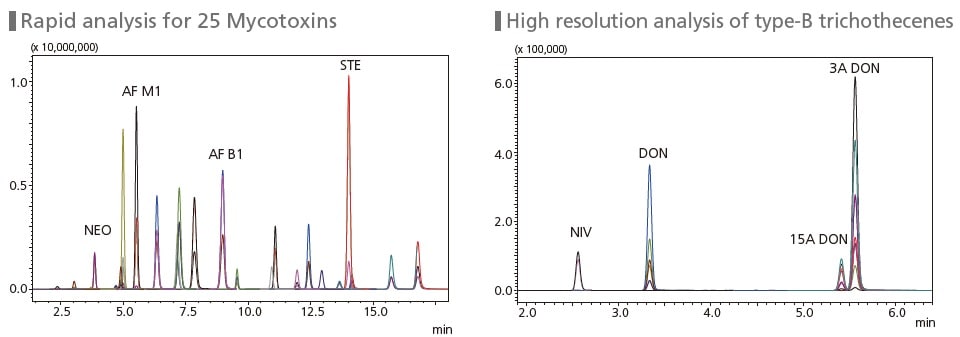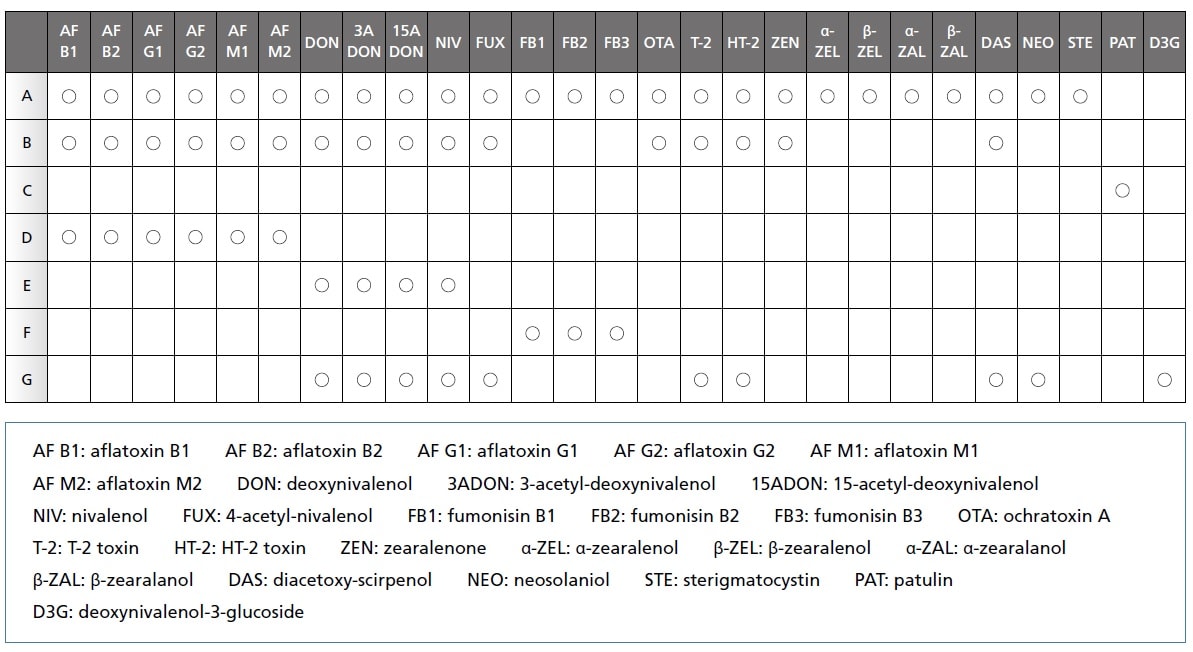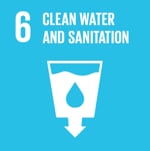LC/MS/MS Method Package for Mycotoxins
For LabSolutions™ LCMS

Mycotoxins are highly toxic chemical byproducts from fungi commonly found in crops, and residual content in foods are regulated the world over. This method package provides simultaneous multi-component analysis conditions for mycotoxins subject to the regulations in Japan, the USA, the EU, and China.
Analytical Methods for 27 Mycotoxins
This package contains seven different analytical method conditions and fully optimized MRM transitions for a total of 27 different mycotoxins. Rapid analytical methods are included for a 25 mycotoxin screen, 16 mycotoxins using high-sensitivity conditions, 10 mycotoxins using APCI, and specialized methods for trichothecenes, fumonisins, aflatoxins, and patulin.

Description of Each Method
| Outline | Analysis time | Description | |
|---|---|---|---|
| A | Rapid analysis method for 25 components | 20 min | This method rapidly and simultaneously analyzes 25 Mycotoxins. Carryovers are minimized by adopting the rinsing function from the Nexera series. |
| B | High-sensitivity analysis method for 16 components | 30 min | This method analyzes trichothecene mycotoxins with high sensitivity. |
| C | Method for analysis of patulin | 10 min | This method analyzes patulin. |
| D | Method for analysis of aflatoxins | 30 min | This method analyzes 6 aflatoxins. |
| E | Method for high resolution analysis of type-B trichothecenes | 12 min | This method focuses on separation out acetyldeoxynivalenol isomers. |
| F | Method for fumonisins | 15 min | Carryovers are minimized by adopting the rinsing function from the Nexera series. |
| G | Method for analysis of 10 components based on APCI | 33 min | This method based on ACPI. APCI sometimes enable better recovery rate in complex samples such as animal feed. |
Compound List for Each Method

Remarks and Precautions
LabSolutions LCMS Ver. 5.109 or later and LabSolutions Insight Ver. 3.8SP13 or later are required.
LabSolutions is a trademark of Shimadzu Corporation or its affiliated companies in Japan and/or other countries.
For Research Use Only. Not for use in diagnostic procedures.
News / Events
-
Shimadzu has released the LCMS-8065XE
The new LCMS-8065XE is a triple-quadrupole mass spectrometer with EVOLVED, EFFICIENT, and EXACT capabilities. These exceptional capabilities ensure high reliability and enhanced productivity, empowering the laboratory for the future.
-
Latest issue of Shimadzu Journal, featuring Environmental Analysis, has come out.
This issue showcases advanced technologies and research tackling the global challenges posed by PFAS. As part of Shimadzu’s ongoing commitment to sustainability and problem solving, we strive to reduce environmental impacts and build a better future.
-
New High Resolution Accurate Mass Library for Forensic Toxicology
Perform forensic toxicology screening for drugs of abuse, psychotropic drugs, pharmaceuticals, pesticides, and natural toxins using this high-resolution accurate mass database.
-
Shimadzu has released the Shim-vial™ H glass, S glass.
Shimadzu provides high-quality vials that thoroughly eliminate these risks by visually inspecting each vial, allowing them to be used with confidence.
-
INTERNATIONAL MASS SPECTROMETRY CONFERENCE 2024
Visit the Shimadzu booth at the International Mass Spectrometry Conference (IMSC) 2024.
-
Metabolomics 2024
Shimadzu Lunch Presentation at Metabolomics 2024
Date: June 20th, 2024 (Thursday)
Time: 12:25 – 1:25 p.m.




